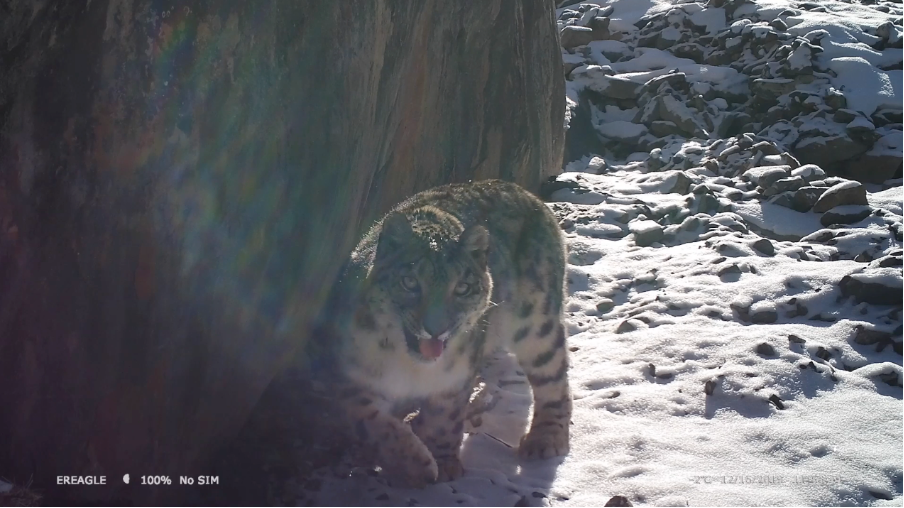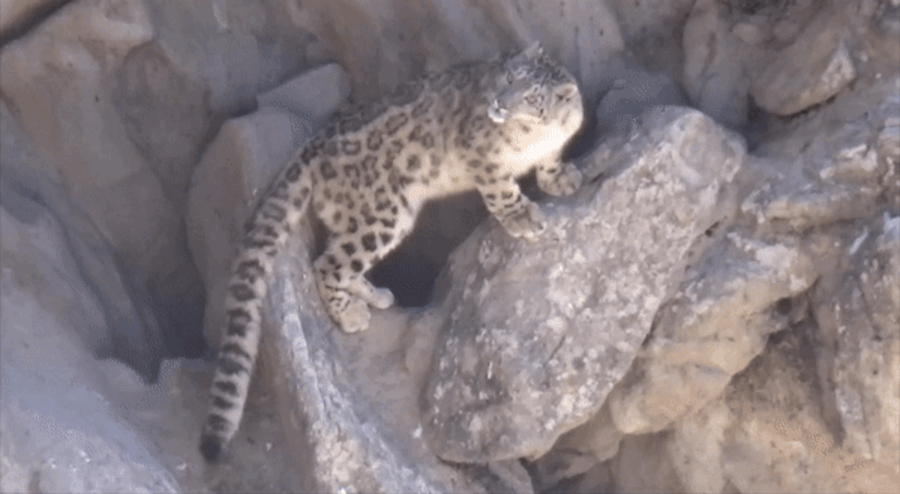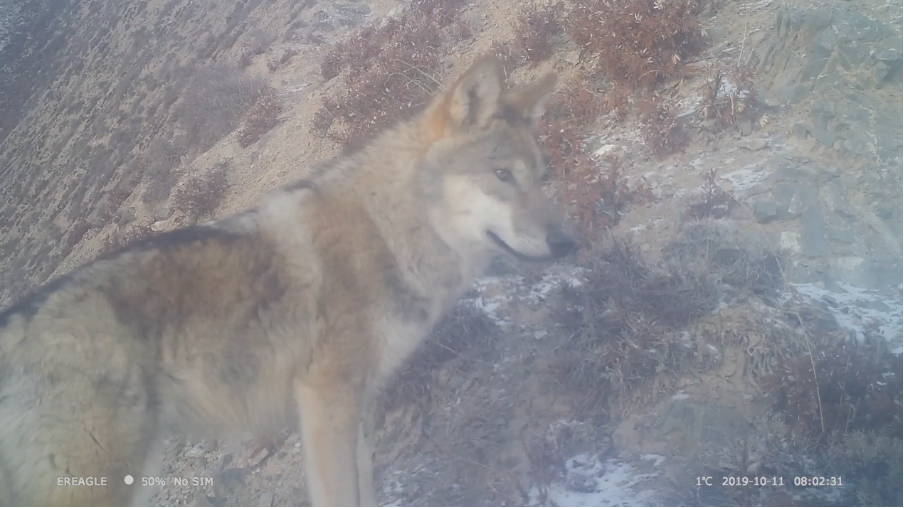Tencent’s Digital Detection Platform Protects Snow Leopards
 Tencent and the World Wide Fund for Nature (WWF) have partnered in China’s Gansu Province to protect snow leopards with a digital detection platform, powered by artificial intelligence.
Tencent and the World Wide Fund for Nature (WWF) have partnered in China’s Gansu Province to protect snow leopards with a digital detection platform, powered by artificial intelligence.
In partnership with the WWF, Tencent has recently started building a digital detection platform to track snow leopards and collect essential data to protect their habitat.
The platform conducts data analysis and generates visualized results that effectively show the number, location, and activity of snow leopards in the area, allowing rangers and environmental specialists to develop protection strategies based on the analysis results.
 Tencent’s digital detection platform detects a snow leopard in Qilian Mountain National Park.
Tencent’s digital detection platform detects a snow leopard in Qilian Mountain National Park.
Conservation Challenges
Snow leopards are rare with as few as 4,000 left on the planet. According to International Union for the Conservation of Nature, snow leopards are listed as “Vulnerable,” with a decreasing trend of population.
About 60 percent of the world's snow leopard habitat is located in China, and their known habitat in China is very focused, occupying less than 2 percent of the land. Sitting at the top of the food chain, snow leopards also serve as a metric for the health of a mountain ecosystem, making it important for us to trace and protect existing habitats.
However, rangers, researchers and environmental specialists around the world are faced with obstacles, such as data collection in rough terrain; species identification using a vast collection of pictures and video files; and data analysis for protection and evidence-based ecological research.
“Snow leopards live in rocky areas that are dangerous to access. The coat patterns camouflage their bodies, making them even more difficult to recognize,” a ranger in Qilian Mountain National Park said. “Over 50 percent of the images and videos of snow leopards here are in low quality. It makes us hard to develop effective conservation strategies.”
 The habitats of snow leopards are dangerous to access.
The habitats of snow leopards are dangerous to access.
The data collected in May this year showed that the digital platform has a 98 percent detection rate in identifying snow leopards, saving more than 50 percent of manpower compared to traditional methods.
Recently, the team has been developing a system to upload data to the cloud. Images and videos from the protected area can be uploaded to the cloud system automatically. Rangers can collect data remotely and get timely results.
 In addition to snow leopards, the system can also detect more than 20 species active in the national park, including red foxes, wolfs, lynxes, brown bears, and more.
In addition to snow leopards, the system can also detect more than 20 species active in the national park, including red foxes, wolfs, lynxes, brown bears, and more.
Technology for Good
The AI-based digital platform is listed as Top 100 Typical Cases at the COP15 UN Biodiversity Conference in 2021.
The project team hopes to roll out this system to more places around the world where snow leopards live, and build cross-border collaboration for biodiversity protection efforts.
“We hope to share the technology with other countries to protect snow leopards around the world,” an environmentalist from the WWF said. “By protecting snow leopards, we are also preserving the environment for other species in the area.”
 Qilian Mountain National Park is one of the largest nature reserves in China with rich biodiversity.
Qilian Mountain National Park is one of the largest nature reserves in China with rich biodiversity.


